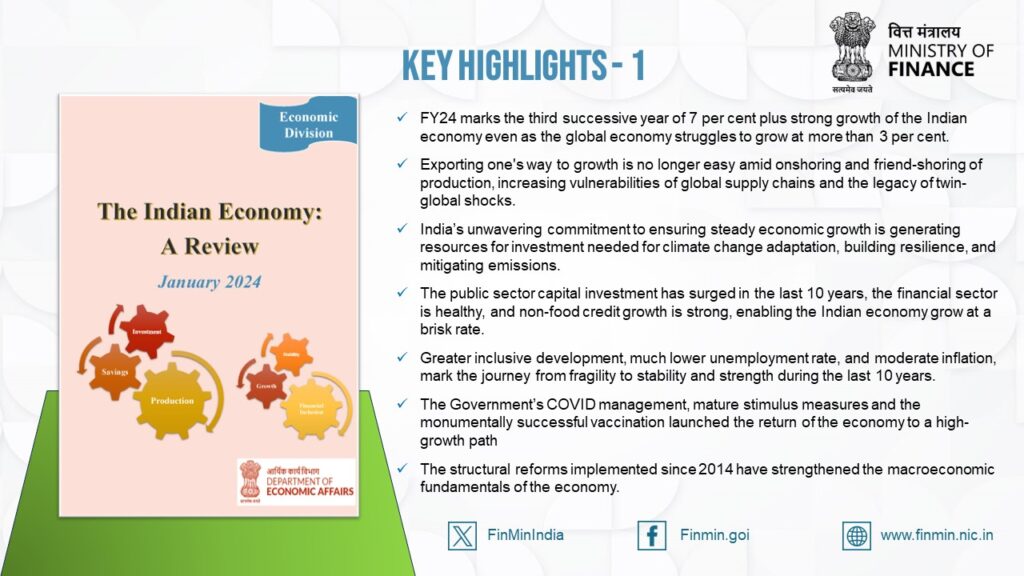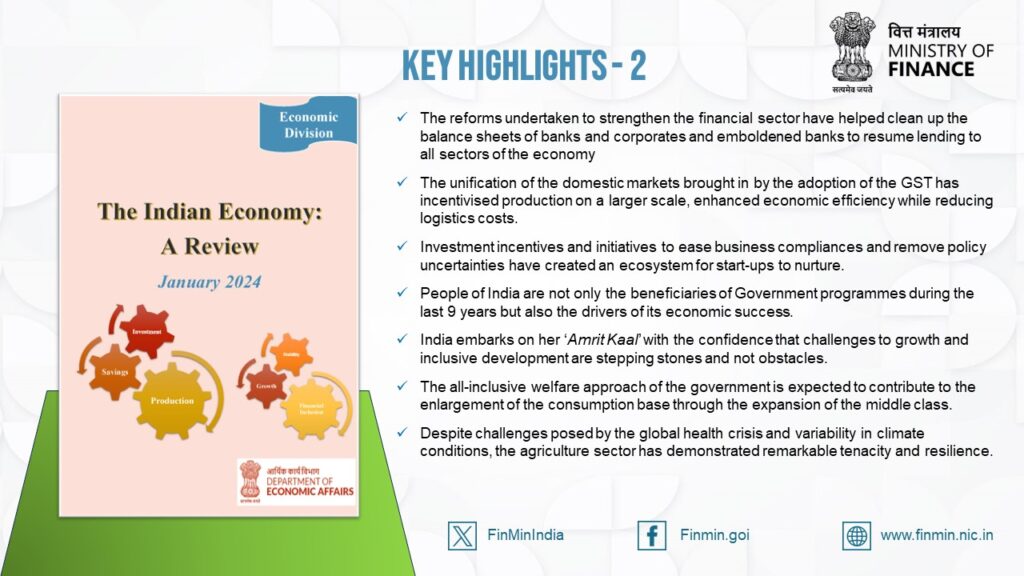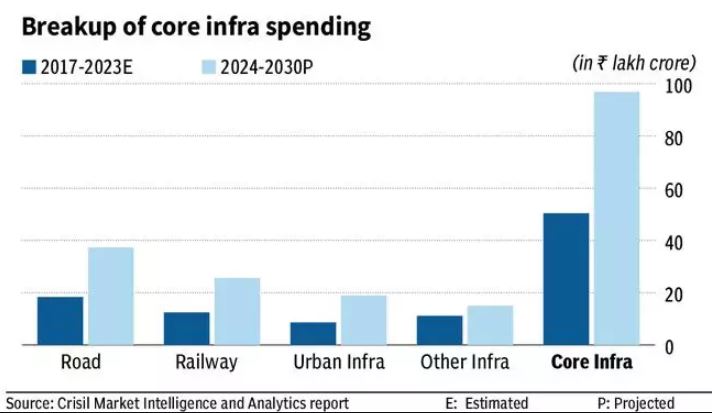The Indian Prime Minister Narendra Modi’s government is presenting the interim budget today on 1 February 2024.
It is the 10th year of budget since Modi took over the reins of the country and its economy in 2014.
Overall, there have been 12 budgets – 10 full and 2 interim – under the Modi government.
You Can Also Read: INDIA REPUBLIC DAY HIGHLIGHTS GROWING FRANCE TIES
And as Finance Minister Nirmala Sitharaman delivers her budget speech in the parliament, all eyes are on what it means for the upcoming Lok Sabha election and for India’s future.
Looking back
In the last 10 years, India has evolved to become a major player in the Indo-Pacific region as well as an important voice in international affairs.
Globally, India has come a long way during Modi’s terms, becoming the world’s fifth-largest economy, while on the way to become the third-largest in a year.
“If all goes well, India will be a $5 trillion economy in two years,”
says Nilanjan Banik, Professor of Economics and Finance at The School of Management, Mahindra University.
Speaking exclusively to PressXpress about India’s growth trajectory, Banik said the country will likely “be a $7 trillion economy before the decade ends.”
Recently, the Indian Ministry of Finance released a 10-year economic review report, which talks about an optimistic growth rate of 7% in the coming years. The government has also set an ambitious target of transforming India into a “developed country” by 2047.
Read full report here: https://dea.gov.in/sites/default/files/The%20Indian%20Economy-A%20Review_Jan%202024.pdf
According to government data, in the leading up years to 2014, India’s GDP growth was struggling to reach 7%. But since 2014, the growth touched 7.4, 8, and then 8.3% in the first three years of Modi government.
However, on the domestic front, the budgets are more about striking the right balance between growth and welfare. In fact, traditionally, domestic issues such as poverty, jobs, inflation, and taxes get a much larger chunk of attention during union budgets.




Source: Indian Ministry of Finance
Modi 1.0 & 2.0
Budgets presented during Modi 1.0 & 2.0 governments have typically focused on a multitude of sectors, including defence, agriculture, infrastructure, fiscal deficit, etc.
Crucially, during the pandemic years, the focus of the budgets was on recovery and fighting global economic crises.
In the area of defence, India spent more than Rs 300,000 crore in 2014 budget, and increased foreign direct investment (FDI) to 49%. By 2023, the defence budget increased to almost double – Rs 600,000 crore, constituting nearly 13% of the central government’s expenditure.
The government has also liberalised and allowed FDI up to 74% through automatic route and up to 100% through government route. India received FDI worth $3.21 million in defence industries during April-September period in FY 2023.
In the area of agriculture, one of the major announcements during the last 10 years was the setting up of the “Kisan Rail” or “Farmer Train”, during the 2020-21 budget presentation. According to Railway Minister Ashwini Vaishnav, 2,359 Kisan Rails have so far transported 7.9 lakh tonnes of perishable goods. Speaking in the parliament, Vaishnaw added that the train now operates on more than 167 routes across the country and is a crucial service in ensuring that the farmers’ perishable goods are not damaged.
In the area of fiscal deficit however, experts point out a widening gap between income and spending.
In 2013-14, the federal fiscal deficit was 4.6% of GDP when PM Modi took charge, according to a Reuters report quoting data from the Reserve Bank of India (RBI). It spiralled to 9.3% in 2020-21 due to the pandemic. And in 2023-24, it has remained at 5.9%, the report says.
In terms of jobs, government estimates point to nearly 16% of urban youth in the age group of 15-29 remaining unemployed in 2022-23, according to government estimates.
However, farmers’ incomes have augmented owing to steps like cash payouts, and raising crop procurement prices.
Infrastructure-led development has also seen a huge boom since 2014 in the last 10 years.
Infrastructure spending in India is expected to double to Rs 143 lakh crore in the 2024-30 period compared to 2017-23. The green infrastructure spending is projected to be Rs 36.6 lakh crore during this period.
“This is going to be the very backbone of the Indian economy,” according to Ashish Bhutani CEO, Bhutani Infra, speaking to India Today.
“Flagship initiatives in the infra sector in the last 10 years such as the National Infrastructure Pipeline, Gati Shakti , Sagarmala, Bharatmala, UDAN and Maritime India Vision 2030 have also made India a favoured destination for foreign investments,” according to Financial Services Secretary Vivek Joshi.

However, it remains to be seen whether the 2024-25 budget will be a real gamechanger for the Indian economy once the Lok Sabha election gets over and the new Cabinet presents the full budget later this year.


